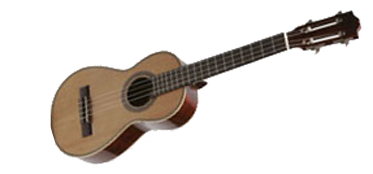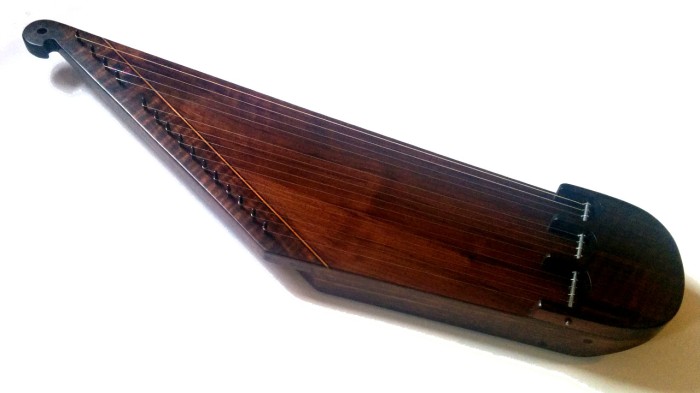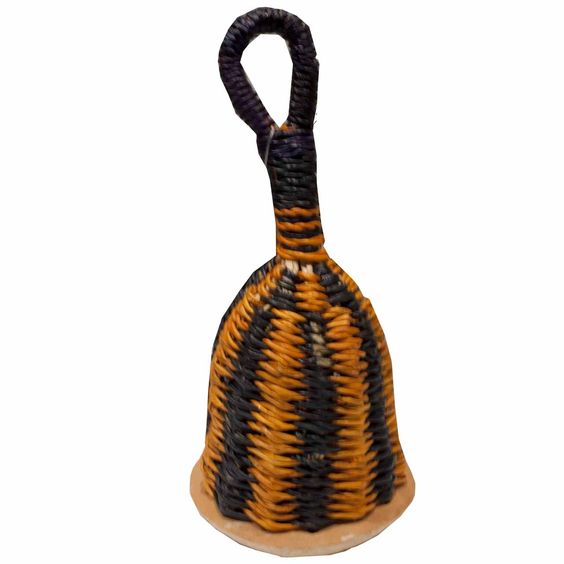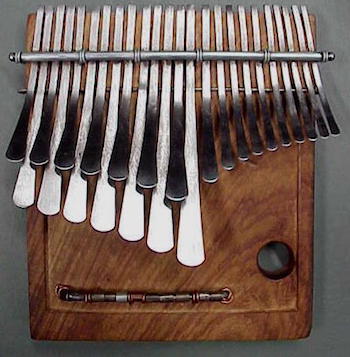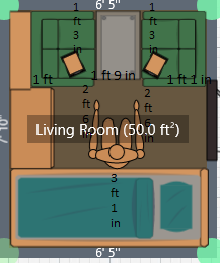I’m Peyton Haynie from Bay City, Tx. This is for week six of Introduction to Music Production at Coursera.org. I will be talking about configuring an EQ plugin to function like a large format mixing console EQ section. For this assignment I will be using the settings shown in the lesson and SONAR Professional.
First, to get to the EQ plugin, right click on the audio track, select process effect, audio effects, directx, sonitus:fx, and finally equalizer.
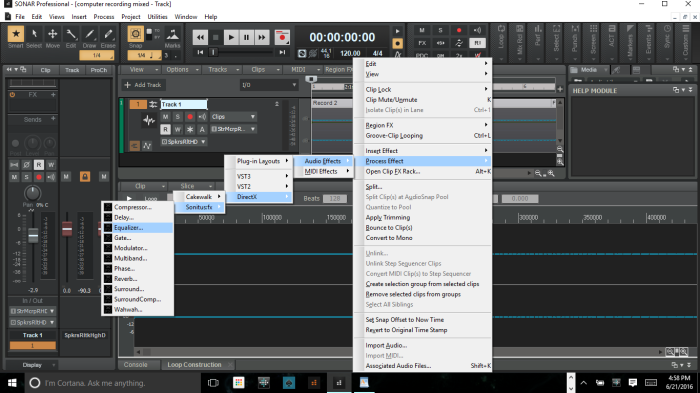
The first EQ setting is the highpass filter (just highpass on this plugin). It should be set to 75 hertz and 18 decibels per octave. In this plugin you can set the decibels before selecting the highpass filter, but I do not believe it will take it into account.
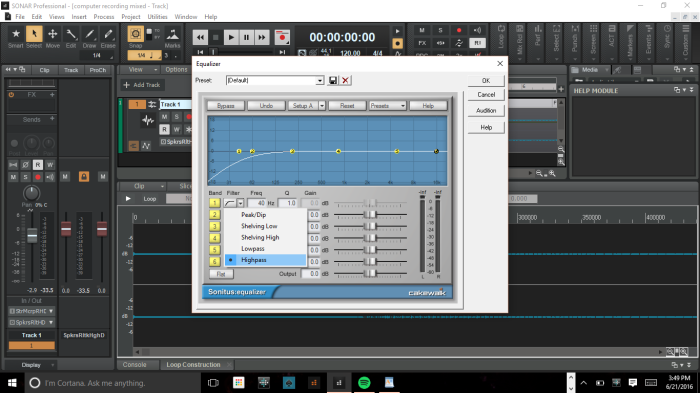
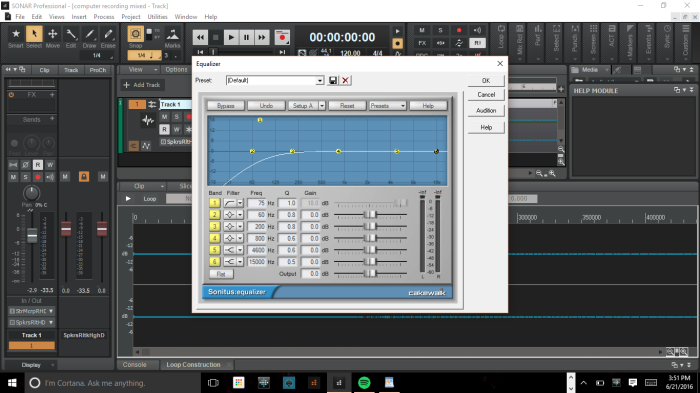
Next is the low shelving filter (shown as shelving low). It should be set at 80 hertz. I also set mine with a Q factor of 1.
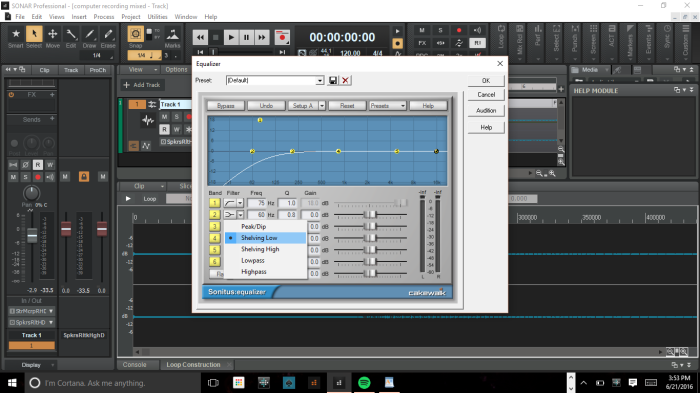

Up next is the low mid range filter (shown as peak/dip). It can be set from 100 – 2000 hertz and between negative 15 – 15 decibels with a Q factor of 1.
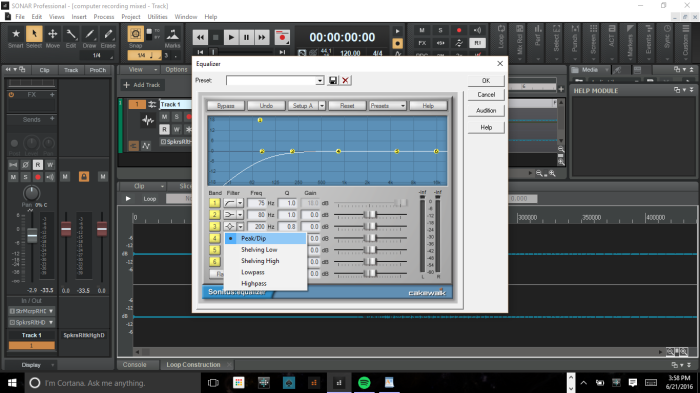
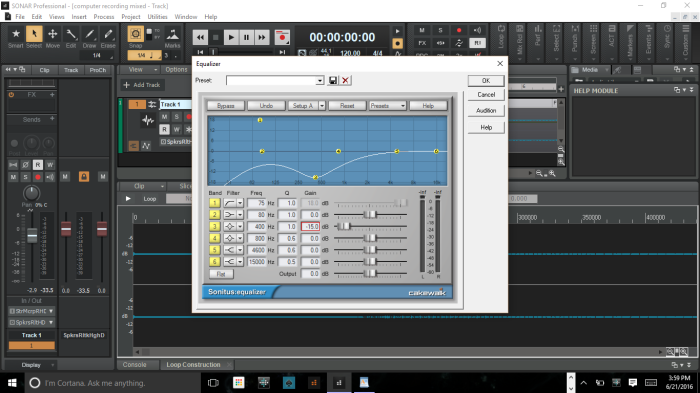
Next is the high mid range filter (also shown as peak/dip). It can be set between 400 – 8000 hertz and negative 15 – 15 decibels, also with a Q factor of 1.
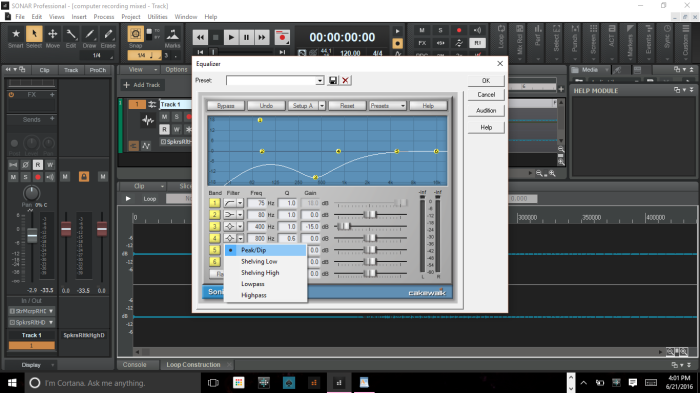
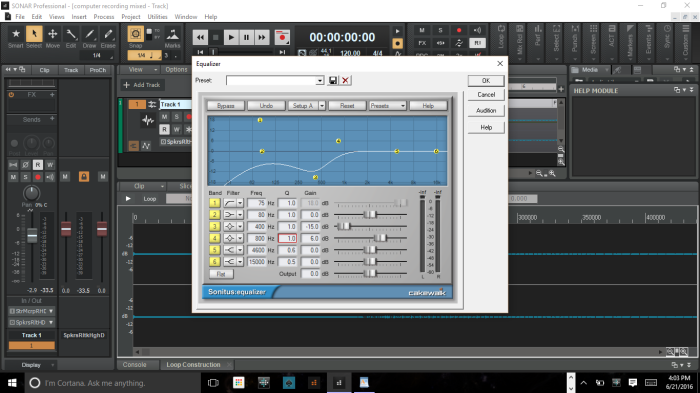
The final EQ setting is the high shelving filter (shown as shelving high). It should be set at 12000 hertz and between negative 15 – 15 decibels.
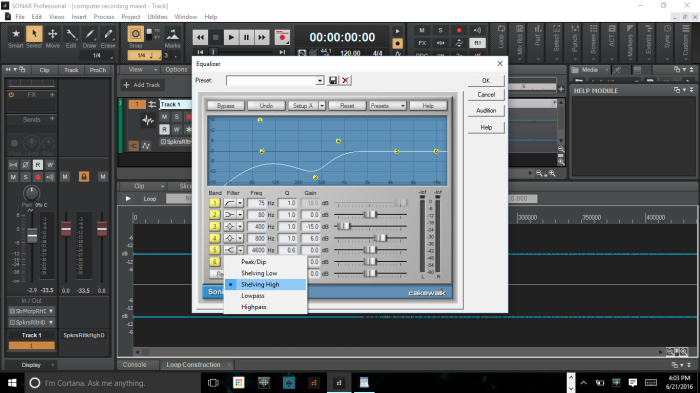
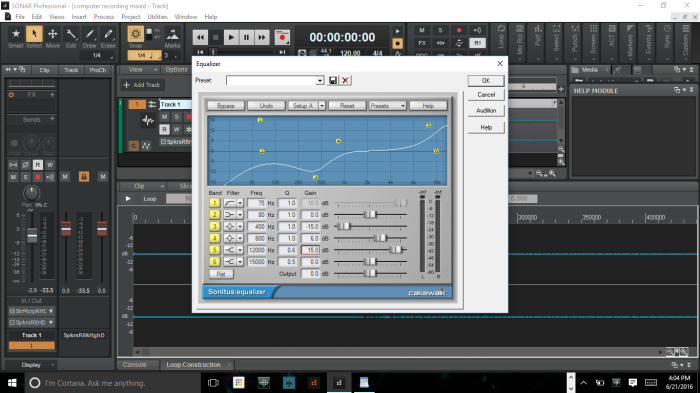
Any of these settings can be enabled or disabled by clicking the yellow box next to it. Clicking the “flat” button will take everything back to zero.
To save this configuration as a preset, simply name it in the preset box and select save.
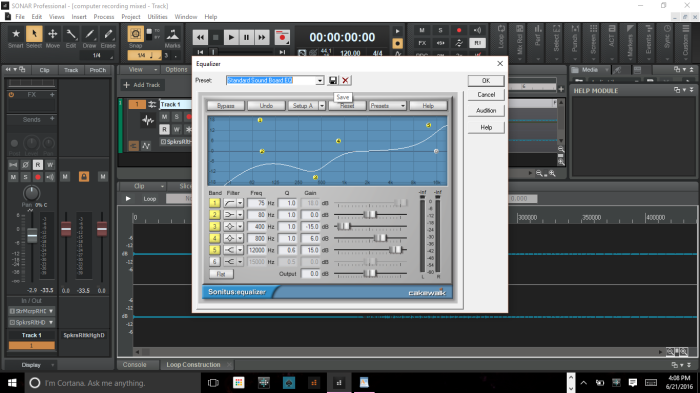
To summarize: High pass filter, 75 Hz, 18 dB. Low shelving filter, 80 Hz. Low mid range filter, 100 – 2000 Hz, neg 15 – 15 dB, Q factor of 1. High mid range filter, 400 – 8000 Hz, neg 15 – 15 dB, Q factor of 1. High shelving filter, 12000 Hz, neg 15 – 15 dB.
